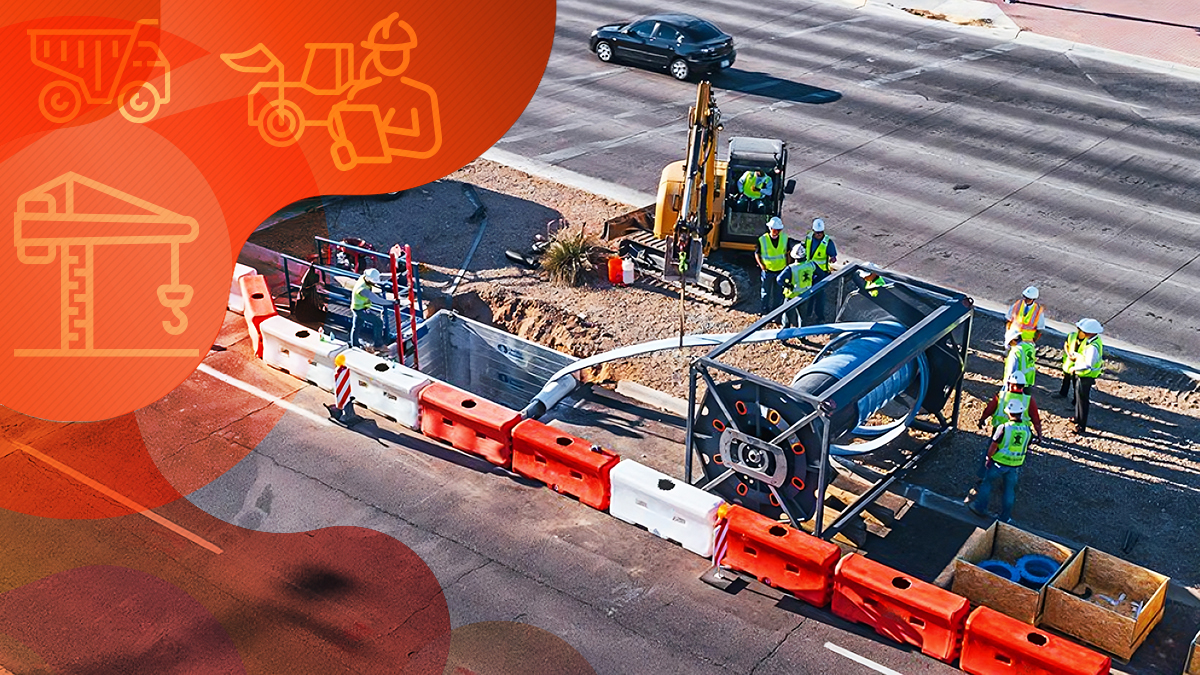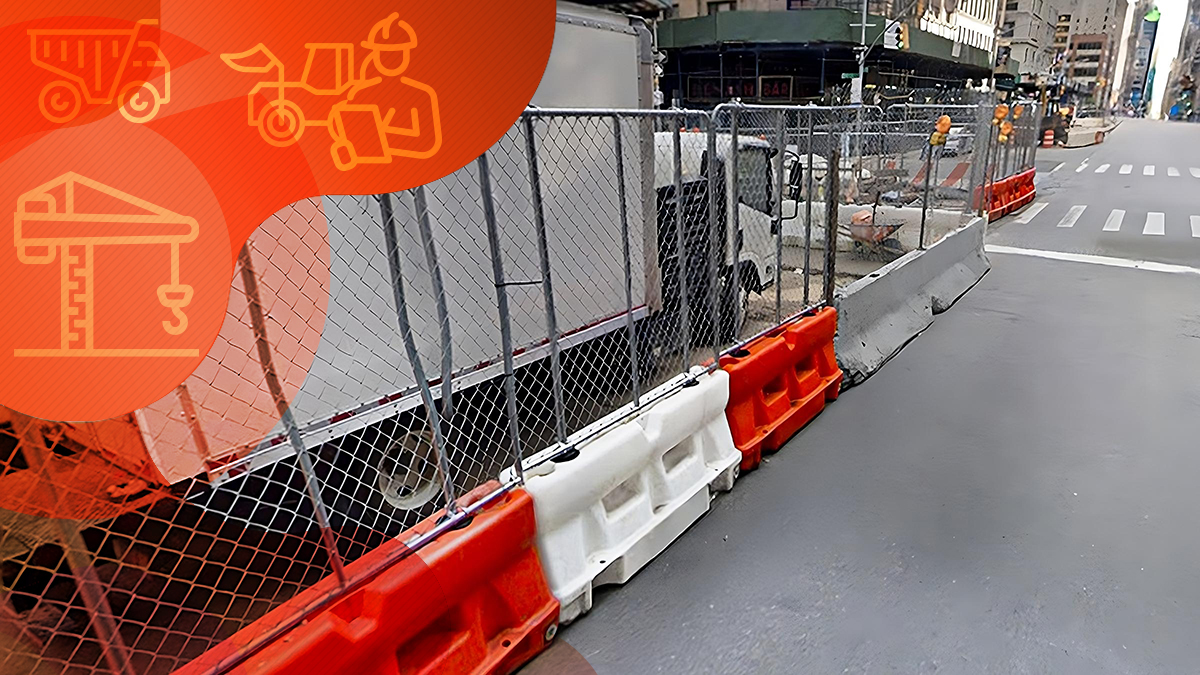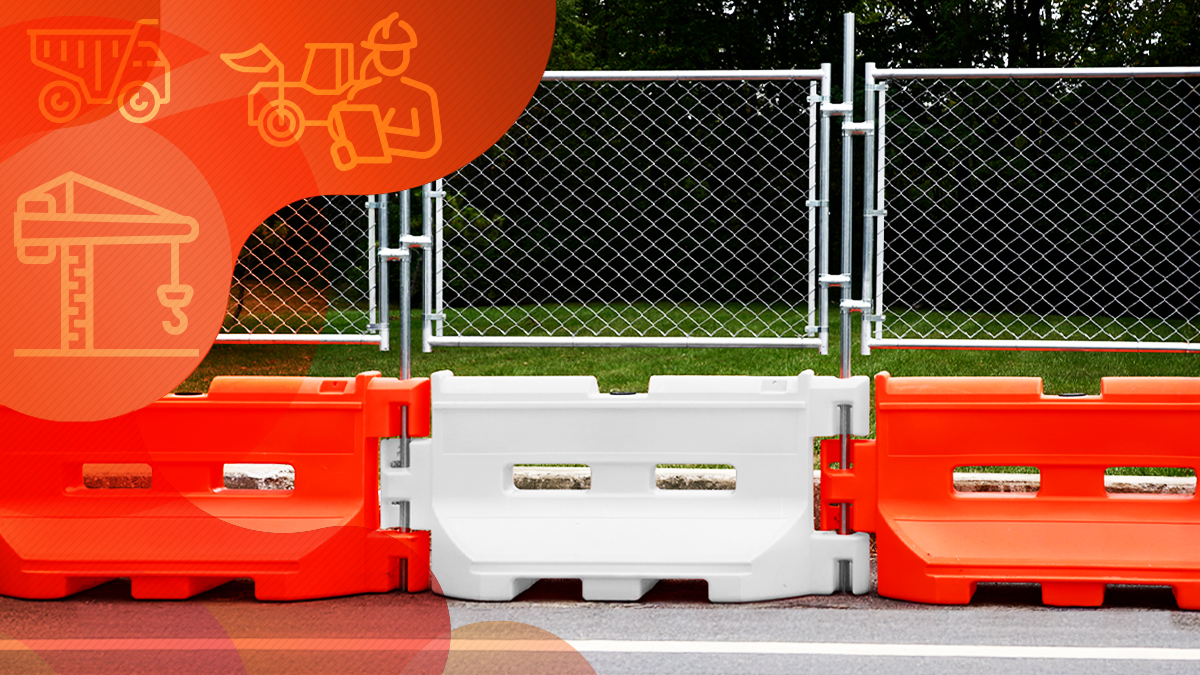Pedestrian Safety in Construction Zones: What You Need to Know
Learn the essentials of protecting pedestrians near construction zones for safer, compliant job sites.

Although safety is always important in or near construction zones, it’s especially critical when job sites are located close to pedestrian areas and public walkways. The numbers vary from one period to the next, but hundreds of pedestrians on average die in work zone-related accidents every year.
From 2011 to 2018 alone, around 16% of work zone fatalities were pedestrians. Also, up to 38% of pedestrian fatalities in work zones happen while the pedestrian in question is on the job (e.g. clearing debris or replacing street signs).
In other words, it’s not just casual passersby who are at risk around construction zones. Even seasoned professionals who understand the importance of workzone safety can be killed or injured. So, pedestrian safety near work sites should always be top of mind.
In this introductory guide to pedestrian safety, we’ll go over everything you need to know to prevent accidents, minimize liability, and keep your work zones compliant with current regulations.
Pedestrian Protection Tools and Equipment
Implementing the right construction zone safety equipment is an important part of holding risk to a minimum and keeping pedestrians safe when they’re nearby. Here are some common examples to know.
Sidewalk sheds
A sidewalk shed is a specialized temporary structure that guards pedestrians from dangers posed by falling debris and other potential hazards. Although the exact materials can vary from shed to shed, most consist of sturdy wood or metal ceilings supported by strong metal beams.
Pedestrian walkways
Like sidewalk sheds, pedestrian walkways are temporary structures that help pedestrians walk safely past construction sites, demolition zones, etc. Most are corridors that provide safe, enclosed temporary walkways when sidewalks and other pedestrian paths must be closed so work can proceed.
Channelizing devices
In situations that call for maximum versatility, channelizing devices like traffic cones, metal barricades, drums, and water barriers can be used to guide pedestrians, vehicles, or both safely around work zones. It’s crucial to position them in ways that make it clear there’s work in progress nearby.
Signage
Signage plays a crucial role in helping both workers and casual passersby handle themselves safely around construction zones. Visible, clear signage can (and should) be used to indicate safety hazards, safety-related instructions, detours, etc.


When Are These Structures Necessary?
Although pedestrian safety should always be a primary concern when setting up any construction zone, specialized structures like sidewalk sheds and corridor walkways are must-haves in certain situations. Here are some key examples.
High-rise or multi-story construction and renovations
High-rise renovations and other vertical construction projects bring unique hazards to the table that call for extra discretion, such as falling debris and dust. Covered walkways and similar solutions help block hazards that may threaten pedestrians from above while also guiding them away from additional dangers (e.g. nearby vehicle traffic).
Demolition projects
Falling debris is an especially crucial concern near demolition sites, making sturdy protective structures and clear signage a must. In some cases, pedestrians may also require protection from additional hazardous materials, such as asbestos.
Facade repairs or window replacements
Even in instances where entire buildings aren’t under construction, protecting pedestrians from hazards like falling debris, broken glass, toxic chemicals, etc. is still critical. Examples where this might occur include exterior repairs to building facades, roof work, window replacements, and similar situations.
Construction near high-traffic areas
When construction zones go up near high-traffic locations, such as busy public streets and downtown areas, providing pedestrians with safe, reliable alternative pathways is essential. In addition to potential hazards like falling building materials, it’s important to keep pedestrians safe from nearby vehicle traffic and similar dangers.
Sidewalk blockages
People rely on sidewalks to get from one place to another. When they’re closed, blocked, or otherwise not available because of construction work, they need alternatives that are equally safe and reliable. Sidewalk alternatives must also serve those with disabilities, so a curb ramp or similar feature may be necessary.
Regulations for Pedestrian Safety in Construction Zones
Prioritizing pedestrian safety by facilitating appropriate detours and protecting walkways with the right equipment is part of protecting your company from liability. It’s also an essential part of staying compliant with important regulations, laws, and standards.
OSHA and FHWA guidelines
The Occupational Safety and Health Administration (OSHA) has detailed guidelines in place to ensure construction zones are safe for pedestrians and visitors. Here are some key examples to keep in mind:
- Pedestrians must be provided with convenient safety pathways through or past construction zones that are visually and functionally similar to standard sidewalks and walking paths.
- Although the minimum required aisle width can vary from one type of project to another, four feet is typical. Safety pathways must also be completely free of any obstructions.
- Workers such as flaggers must wear appropriate high-vis vests or other clothing. They must also be visible from 1,000 feet away.
- Drivers should be detoured away from active work areas using approved traffic control solutions like barriers, cones, and signage.


The Federal Highway Administration (FHWA) also has additional safety guidelines in place, such as the following:
- Alternative safety walkways should not only replicate standard sidewalks and paths but accommodate those with disabilities.
- Pedestrian pathways must guide people away from potential conflicts with construction vehicles, road traffic, equipment, etc.
- Safety walkways must be provided and maintained throughout the entire area affected by the construction zone.
Site-specific safety planning
Compliance with recognized pedestrian safety guidelines should always be part of a larger, more comprehensive approach to work site safety. Customized safety plans are also important, as every construction project comes with unique challenges and potential hazards.
Ensure that pedestrian protection measures are compatible with the location and the potential impact your work zone on nearby foot and vehicle traffic. Round out your safety plan with additional safety techniques and tools, such as temporary fencing for perimeter security and personal protective equipment to safeguard on-site team members.
Creating Safe and Accessible Detours for Pedestrians
Pedestrians passing by your work zone are used to sticking to sidewalks and other pathways that are obviously there for their use. This is exactly why both OSHA and FHWA guidelines dictate that safety detours should look and feel as much like standard walkways as possible. It makes staying out of harm’s way feel as natural as possible.
Planning detours
Here’s a brief overview of some additional considerations to keep in mind when planning pedestrian detours:
- Minimize the additional distance detours will require of pedestrians to discourage deviations from the designated detour.
- Use signage to clearly and visibly mark your detours. If necessary, include information about the length of the detour.
- Use barriers and channelizing equipment to keep pedestrians from wandering into road traffic.
Ensuring accessibility
Accessibility is just as important when implementing pedestrian detours as it is when planning standard sidewalks and walkways. Make sure your safety detours are fully accessible to wheelchair-bound pedestrians and others with disabilities by applying appropriate solutions.
Installing a specially designed temporary curb ramp is an excellent way to make sure wheelchairs, scooters, and people with mobility limitations can easily navigate your detours.
Regular inspections and adjustments
Like perimeter fencing and other construction zone safety measures, pedestrian detours and equipment like sidewalk sheds or corridors should be inspected regularly for issues. Some examples of factors to check include:
- Whether signage is clear, unobstructed, and easy to understand.
- Correct signal timing, if your detours rely on related equipment.
- Whether safety sheds and other structures are free of damage and accumulated debris.
Be prepared to address any potential issues or repairs as soon as possible.
Coordination with local authorities
Construction zones that affect public walkways, roads, and safety are city-wide issues. For that reason, it’s important to coordinate your efforts with municipal authorities, including local police departments and safety committees.
This is especially the case when construction work may require the closure of major public roadways or detours that will affect optimal traffic flow.


Clear communication
Always kick off new work zone safety plans with a thorough round of training for all team members. When pedestrian safety is a factor, implement dedicated training that includes pedestrian protection protocols.
You’ll also need to come up with a system that allows your team to communicate hazards to passing pedestrians. Signage can help communicate warnings and directional guides. When possible, use pictograms and other visual symbols to ensure warnings are understood by non-English-speaking pedestrians. Audio cues may also be helpful in appropriate situations.
Pedestrian Safety Is Part of Any Comprehensive Work Zone Safety Plan
Work zone safety may start with concerns like perimeter security, equipment safety, and personal protective equipment, but it doesn’t stop there. Always consider how hazards unique to your work zone could affect pedestrians on the ground and just outside your site perimeter. Deploy appropriate construction zone safety equipment, techniques, and protocols accordingly.
And remember, pedestrian safety is only one component that comprises a thorough, fully-compliant job site safety plan. Check out our comprehensive guide to site-specific safety plans for even more best practices and essential tips!
Trend now

Reducing Impact Damage with Water-Filled Plastic Jersey Barriers
Understanding the effects of barrier materials on vehicles and their occupants can help improve road safety.

Choosing Between Concrete or Plastic Jersey Barriers
Not all barriers are built the same. Here’s what to know before choosing between plastic and concrete.

Advantages of Water Barriers with Fence Toppers
Learn how a fence topper transforms water barriers into a more secure, private, and effective work site solution.

